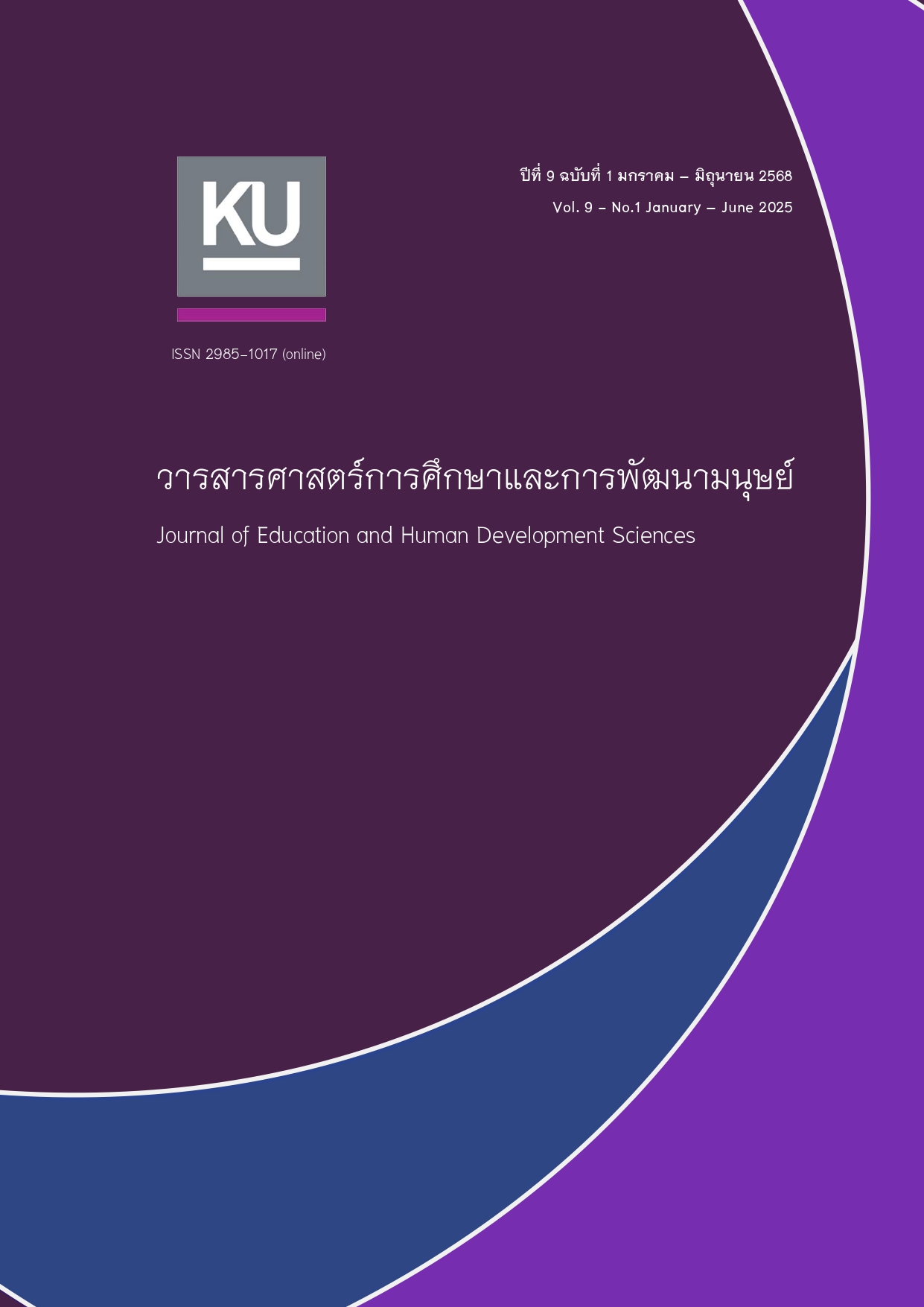Development of a Blended Learning Model with Education Technology based on the Concept of Active Learning to Create Learning Motivation for Students
DOI:
https://doi.org/10.56825/jehds.2025.915912Keywords:
Education technology, Blended Learning, Active Learning modelAbstract
The purposes of this research were 1) to study the problems teaching process of Klongdaenwittaya School, 2) to development of a blended learning model with education technology based on the concept of active learning to create learning motivation for students, and 3) to study the finding of using a blended learning model with education technology based on the concept of active learning to create learning motivation for students. The samples group of research was a class of grade 8 students of Klongdaenwittaya School Songkhla, computing science subject in computer systems and communication technology topic. The research instruments were 1) blended learning model with education technology based on the concept of active learning to create learning motivation for students, 2) lesson plans, 3) the assessment of the student’s learning motivation, 4) the observation of the student’s learning motivation, and 5) the assessment of the student satisfaction. The statistic using for data analysis included the mean, standard Deviation, T-test dependent and reliability.
The results of the research were as follows.
1) The problems the previous teaching process was tediously causing students learning motivation reducing.
2) The efficiency by the experts for evaluating appropriateness of a blended learning model with education technology based on the concept of active learning to create learning motivation learning for students with 5 steps learning [ 1) consciousness, 2) important content, 3) discovery, 4) style creation, and 5) evaluation and reflection] was at the highest level (X = 4.54 S.D. = 0.48).
3) The students’ posttest level learning motivation (= 2.92 S.D. = 0.57) were significantly higher than the pretest level learning motivation (=8, S.D.=3.12) with statistically significant at the level of .05.
4) The students' satisfaction by participated a blended learning model with education technology based on the concept of active learning to create learning motivation for students was at high level (= 4.28 S.D. = 0.64).
Downloads
References
Boriboon, S. (2021). Meditation : With solving students unwanted problems. Srilangchang Research Journal, 1(2), 35–50. [translated]
Dusai, Y., Siriwan, I., & Chamnisat, B. (2019). Motivation Strategies for Learning of Elementary School Students in Bangkok Educational Institutions. Journal of MCU Nakhondhat, 6(3), 1380–1395. [translated]
Fongjangwang, S., & Kongmanus, K. (2017). The Development of Blended Instructional Model by Using Cooperative Learning in Basic JavaScript Language Programming for Mathayom Suksa 3 Students. Journal of Community Development Research(Humanities Ans Social Sciences), 10(4), 121–133. [translated]
Keawmanee, N. (2019). A study of learning achievement in learning area of occupations and technology and creative thinking ability of grade 9 students using project-based learning approach. Valaya Anongkorn Rajabhat University under the Royal Patronage Pathum Thani. [translated]
Khampa, M. (2019). Development of Visual Art Product creating by Using Discovery Learning for Lower Secondary School Students. Dhurakij Pundit University. [translated]
Klongdaenwittaya School. (2022). Self Assessment Report :SAR of Klongdaenwittaya School. [translated]
Ministry of Education. (2017). Thailand education scheme in brief 2017-2036 (1th ed.). Prigwhan. [translated]
Phitchaya and Lincharoen, A. D. (2017). A Development Approach for Assessment Learning and Innovation Skills Using Assessment of Learners Method in 21 st Century. Journal of Community Development Research (Humanities and Social Sciences), 2(10), 139–153. [translated]
Phuriwikrai K.(2022). World education in the 21st century: systems still inequitable Learning is still
in crisis. Equitable Education Fund (EEF). https://www.eef.or.th/global-education/.[translated]
Prachyapruit, A. (2018). Development of Teacher preparation Model to Serve Education 4.0. Journal Romphruek, 35(3), 102–132. [translated]
Pumsanthia, P., Charoenchob, S., Meesup, P., & Voravitrattanakul, P. (2020). The Development of Augmented Reality on Chinese Language Learningfor Tenth Grade Students. Journal of Education Studies, 48(2), 184–202. [translated]
Taraporn, T., Lamlaor, A., & Rungruangsuparat, B. (2020). Blended Learning Approach and the Future of Education Management in New Normal Society. Journal of Liberal Arts RMUTT, 1(1), 25–39. [translated]
The Institute for the Promotion of Teaching Science and Technology (IPST). (2023). conference of PISA 2022. https://pisathailand.ipst.ac.th/news-21/ .[translated]
Wangkid, M., Onming, R., & Kasemnet, L. (2017). Development of instructional model for information
technology focused on self-directed learning in flipped learning with grade seven students.
Phranakhon Rajabhat Research Journal (Humanities and Social Sciences), 12(1), 190–204.
[translated]
Wanichanan, P. (2023). TDRI points out that the PISA test results send a warning message that
the Thai education system has problems that make Thai people unprepared to cope with a changing
world. https://tdri.or.th/2023/12/pisa-2022/. [translated]
Downloads
Published
Issue
Section
License
Copyright (c) 2025 วารสารศาสตร์การศึกษาและการพัฒนามนุษย์

This work is licensed under a Creative Commons Attribution-NonCommercial-NoDerivatives 4.0 International License.







